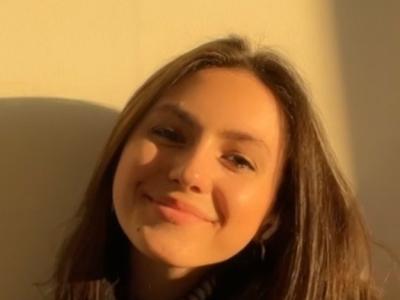
The School of Law building at Singapore Management University has won the Energy Efficient Buildings Award in the new and existing building category at the 2018 ASEAN Energy Awards for Sustainability Ceremony which was held during the 36th ASEAN Ministers on Energy Meeting Official Dinner on 29 October 2018 in Singapore.
SMU President Professor Arnoud De Meyer received the award from ASEAN Secretary General, Dato Lim Jock Hoi.
The 2018 ASEAN Energy Awards are presented to individuals and organisations for their innovation of cleaner, more energy-efficient technology for improved energy systems in the region.
This is the second time SMU has won a regional award for energy management. The first was in 2016, when SMU won the ASEAN Best Practices Awards for Energy Efficient Buildings (Retrofitted Building Category) at the ASEAN Energy Awards 2016.

Caption: SMU President Prof Arnoud De Meyer (centre, holding the award) sharing the joyous moment with staff from the Office of Campus Infrastructure and Services (OCIS): (L-R); Mr James Jian, Head-Engineering Services, OCIS; Mr Sundaravadivelan Selvam, Vice President, OCIS; Ms Bharathy G Shanmugam, Head-Campus Development, OCIS; and Mr Shantul Malviya, Head- Procurement, Administration and Community Engagement, OCIS. Also in the photo is Ms Phan Pit Li (second from left), Director of MKPL Architects Pte Ltd [Photo: EMA]
SMU President Professor Arnoud De Meyer said, "Getting this building up was a big project for us. Reaching environmental sustainability is a great honour, and I'd like to congratulate the whole team." His sharing on SMU’s Law School's win at the 2018 ASEAN Energy Awards can be found at #SIEW2018.
The School of Law building demonstrates beautiful and meticulous amalgamation of passive and active design elements to achieve ‘total building performance’ approach that ensures optimal and sustainable building performance.
The building’s passive design responds to the site’s sun path, with multitude of features like double glazing, low-emissivity glass, fritting on glass, external shading devices and greenery which minimises glare and heat absorption by the building, thereby reducing overall building energy consumption. The average ETTV (Envelope Thermal Transfer Value) of the building is 37.74W/sqm.
During the design stage, computer simulations have optimised the façade and layout design. Introduction of naturally ventilated central social spaces such as an atrium and open staircases maximised the thermal comfort for occupants. The majority of teaching facilities were designed to receive diffused natural day light from adjacent open spaces so as to reduce the use of artificial lighting.
Key active design features contributing to building’s optimal performance are:
- Energy-efficient LED lighting with dimmable controls. The building is designed for lighting density of 5.8 W/sqm
- Intelligent Lighting Management System
- Naturally ventilated toilets and staircases installed with motion sensors
- Escalators and lifts programmed with smart energy saving modes
- Local thermostats in teaching spaces for air-conditioning control
- High efficiency chilled water FCUs (Fan Coil Units) and Computer Room Air-Handling (CRAH) units for all IT rooms and Data Centre.
- Ultraviolet lights and electronic air filters for AHUs (Air Handling Units to reduce airflow loss and improve efficiency
- Enhanced Passive Displacement Cooling (EPDC) units (i.e. cooling system with no fans) installed at the food & beverage space
- High Velocity Low Speed (HVLS) fans in the central social spaces such as the atrium
- Building performance display which showcases in real-time the energy and water consumption performance of the building. This is to communicate the importance of water and energy conservation to its occupants and visitors.
- Its chiller plant system operates at a high efficiency of 0.54kW/RT1 with optimised streamlined chilled water and condenser water pipes, controls through the use of Variable Speed Drives for the pumps and cooling towers
- Automatic irrigation system, using rain and soil moisture sensors
“Passive displacement technology for climate control is not new. However, the way it is being leveraged upon, with enhancements to its design capabilities, continues to offer new levels of flexibility which helps us to develop more and more sustainable spaces,” said Mr Sundar Selvam, Vice President, Office of Campus Infrastructure and Services.
Just before the award ceremony on 29 October 2018, SMU and Singapore’s Energy Market Authority jointly hosted the delegates of the 36th ASEAN Ministers on Energy Meeting to a visit to the School of Law building on 27 October 2018. The SMU team had a useful and meaningful time interacting with over 70 ASEAN Delegates comprising of senior ministry officials.

Caption: Mr Sundar Selvam (centre) shared the energy-saving features of the School of Law building with delegates of the 36thASEAN Ministers on Energy Meeting. [Photo: EMA]
Mr Jonathan Goh, Director, External Relations, Energy Planning and Development Division, Energy Market Authority, Singapore said “We received excellent feedback from the delegates who expressed great interest in the tour and thoroughly enjoyed themselves.”
This win is another feather in the cap for SMU in 2018. Earlier this year, SMU won the Community in Bloom Awards (Gold) by National Parks Board, and the Singapore Environmental Achievement Awards (Merit Winner) by the Singapore Environment Council.
Featured photo: SMU President Professor Arnoud De Meyer (right) received the ASEAN Energy Efficient Buildings Award from ASEAN Secretary General, Dato Lim Jock Hoi. [Photo: EMA]

